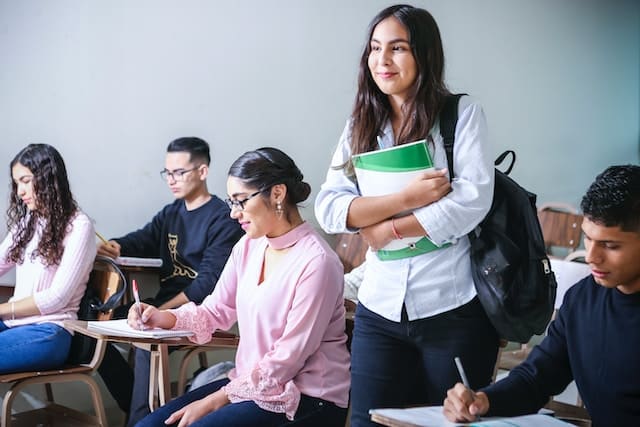Australia: Border reopening begins alongside expanded vaccine approvals
- Once Australia’s national vaccination rate hits 80% (expected in November), borders will reopen for Australian travellers
- Vaccinated international students and skilled migrants are the next priorities
- The Covishield and Sinovac vaccines join list of approved jabs in Australia, opening the door to Chinese, Indian, and Southeast Asian students
- New state pilots to bring international students back are in the works
Vaccination rates are going up in Australia, and as they do, the government is preparing to reopen the country’s borders more fully for its citizens and permanent residents, and shortly after, international students. The transition will occur once the country has reached a national vaccination rate of 80% of the eligible population over the age of 16, a milestone that is expected to be reached in early November.
First on the agenda is allowing Australians to exit and enter Australia. Since March 2020, Australians have only been able to leave the country for “exceptional reasons” such as a death in the family. Arrivals have been permitted but with strict caps on daily numbers; for many Australians it has taken months to return home. A 7-day at-home quarantine will be required for returning Australians who are vaccinated, while those who aren’t vaccinated will be required to undergo a 14-day quarantine in a designated hotel.
No firm dates have been announced for the introduction of a country-wide protocol for allowing the return of international students, but Prime Minister Scott Morrison told Seven Network television that,
“The next priorities are skilled migrants that are very important for the country and who are double vaccinated, as well as students who are coming and returning to Australia for their studies.”
Sinovac and Covishield now approved in Australia
In exciting news for Australian educators, Australia’s Therapeutic Goods Administration (TGA) has just approved both the Chinese-made Sinovac vaccine and the Indian-made version of AstraZeneca – Covishield. This means that Chinese, Indian, and other Southeast Asian students who have received these vaccines will be permitted to enter Australia. Until the announcement of these approvals last week, educators had been dismayed because the only approved vaccines for those entering Australia had been Pfizer, Moderna, Janssen (Johnson & Johnson), and AstraZeneca – which would have excluded many students from Asia.
More than 80 countries are administering Chinese-made COVID vaccines – many of them in key international student markets. Covishield is by far the most distributed vaccine in India, with more than 800 million doses administered.
More pilots in the works
There are a growing number of state-specific pilots approved to bring some students back in gradually. For example:
- There is a state-approved plan for the return of 120 international students to Victorian universities by the end of the year, followed by the return of more students across more sectors. This plan has yet to be federally approved.
- In New South Wales, 500 international students are expected to return by the end of the year under a federally approved plan to bring in 250 students a fortnight; these students must be vaccinated with a vaccine approved by Australia’s Therapeutic Goods Administration (TGA).
- A plan is underway in Queensland to welcome back international students, with “Queensland Government agencies including Queensland Health and the Queensland Chief Health Officer, the Australian Government and the international education and training sector” currently in the midst of finalising the plan.
Until now, very few international students have so far been allowed to return. In one early exception late in 2020, 63 international students from China, Hong Kong, Japan, Vietnam, and Indonesia returned to Northern Territory.
A patchwork of initiatives
While the new pilots offer a glimpse of hope for the country’s international education sector – which has been exceedingly challenged by months of COVID-related border closures – they highlight the fact that all attempts to fly students back in have been initiated at the state, rather than federal, level.
This is not ideal, but educators and state governments have had no choice but to organise – then hope for approval of – their own pilots given the federal government’s steadfast commitment to keeping borders closed since March 2020.
The patchwork of pilots has created confusion for returning international students and educators (e.g., around issues such as who will cover the costs of quarantine and which students are priorities for the individual pilots). It has meant extra work for institutions trying to communicate with students about when they might be allowed to return, which is not always clear. There is also the fact that some approved pilots have been scrapped when COVID infection rates have surged in various regions, leading to a sense of insecurity about whether approved arrangements will in fact be actualised.
At the Australian International Education Conference (AIEC) last week, StudyPerth chief executive Phil Payne commented,
“Without further coordination and intervention from the federal government, and without more cooperation from the states and territories, things are inevitably going to be a bit of a mess. But I’m confident that the collegiate approach taken so far by states and territories will prevail.”
A quick switch of gears
When national borders do fully reopen to vaccinated international students, it will obviously be a relief for educators. But their work will quickly transition to face a new challenge: a surge of returning students. THE reports that at the AIEC conference, “Panellists warned that states may need to prepare for a sudden ‘influx’ of international students, with recent developments suggesting that restrictions could be eased unexpectedly quickly.”
Edith Cowan University deputy vice-chancellor Simon Ridings noted, “Rather than looking at small pilots or gradual reintroduction, things might be moving along quite speedily.”
At the moment, it is estimated that more than 130,000 international students enrolled at Australian education institutions are studying in their home countries because they have not been able to return to Australia.
For additional background, please see:













